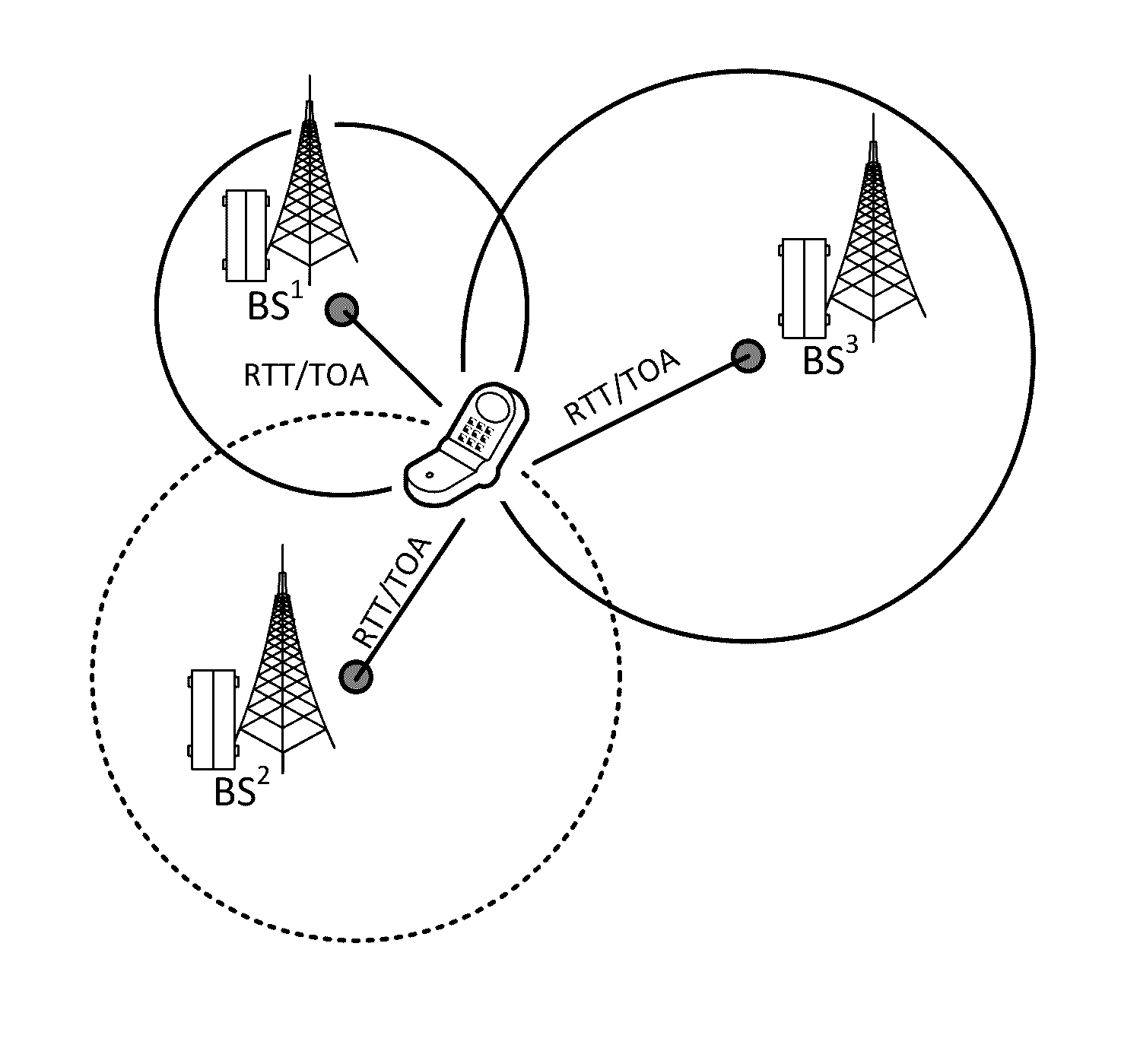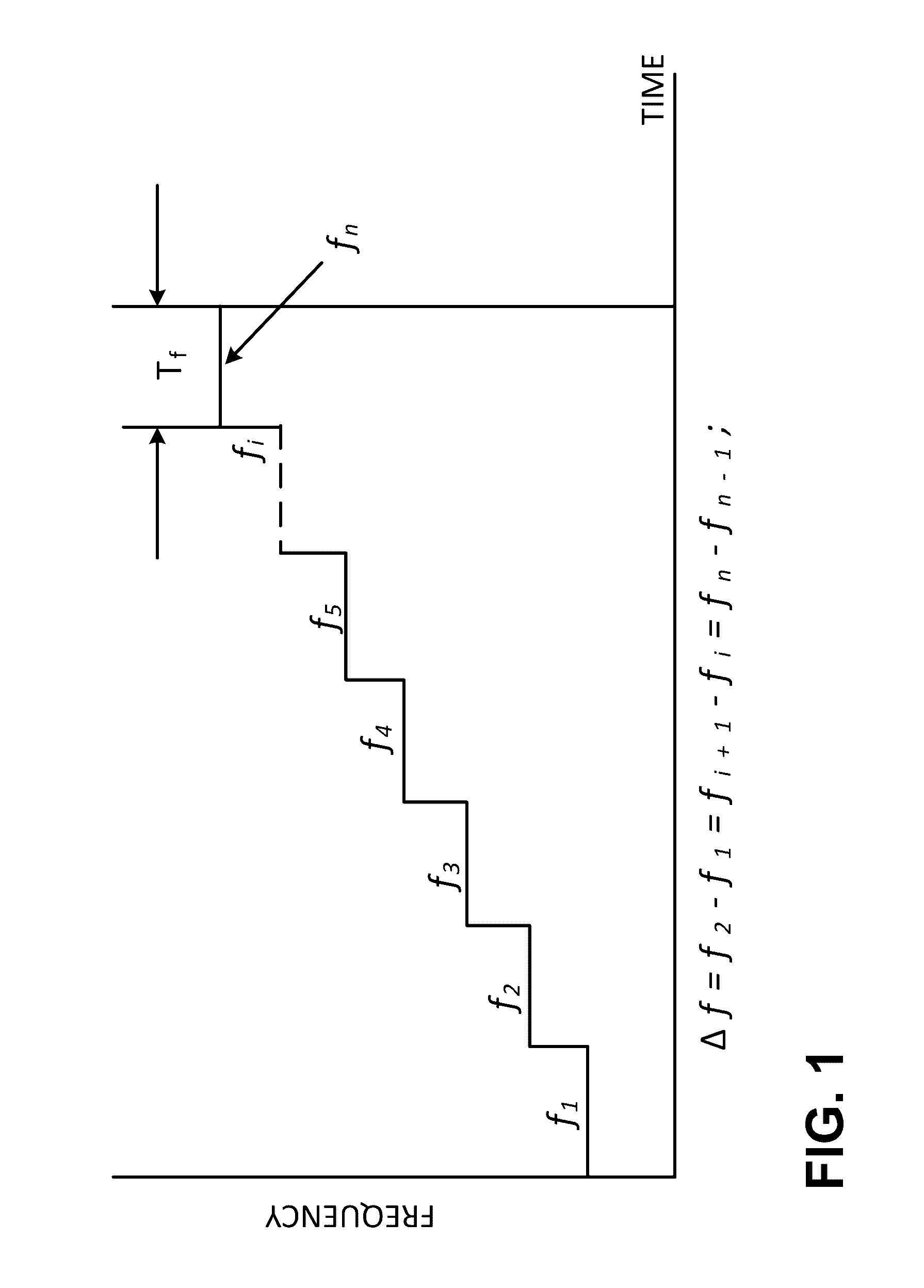However, conventional location-finding systems suffer from certain inaccuracies when locating the objects in closed (i.e., indoor) environments, as well as outdoors.
Although cellular
wireless communication systems provide excellent data coverage in urban and most indoor environments, the position accuracy of these systems is limited by self-interference, multipath and non-line-of-
sight propagation.
The indoor and outdoor location inaccuracies are due mainly to the
physics of RF propagation, in particular, due to losses / attenuation of the RF signals,
signal scattering and reflections.
Although, at VHF and lower frequencies the multi-path phenomena (e.g., RF energy reflections), is less severe than at UHF and higher frequencies, the
impact of the multi-path phenomena on location-finding accuracy makes
location determination less reliable and precise than required by the industry.
However, the spatial diversity may not be an option in many tracking-location applications because it leads to an increase in required infrastructure.
Similarly, the
antenna diversity has a limited value, because at lower operating frequencies, for example VHF, the physical size of antenna subsystem becomes too large.
Thus, at VHF and lower frequencies the size of the
antenna array will significantly
impact device portability.
On the other hand, because of a very limited
frequency spectrum, the
narrow bandwidth ranging signal does not lend itself into multi-path mitigation techniques that are currently used by conventional RF-based identification and location-finding systems.
The reason is that the
ranging signal
distortion (i.e., change in the signal) that is induced by the multi-path is too small for reliable detection /
processing in presence of
noise.
Also, because of limited bandwidth the
narrow bandwidth receiver cannot differentiate between
ranging signal Direct-Line-Of-
Sight (DLOS) path and delayed ranging signal paths when these are separated by small delays, since the
narrow bandwidth receiver lacks the required
time resolution, which is proportional to the
receiver's bandwidth (e.g., the narrow bandwidth has an integrating effect on the incoming signals).
However, the position accuracy available with of these systems is limited by self-interference, multipath and non-line-of-
sight propagation.
While these methods might satisfy the current mandatory FCC E911 emergency location requirements, the accuracy, reliability and availability of these location methods fall short of the needs of LBS (Location Based Services) or RTLS system users, who require highly accurate locating within buildings, shopping malls, urban corridors, etc.
It is well known that the A-GNSS (A-GPS) accuracy is very good in open spaces but is very unreliable in urban / indoor environments.
At the same time other techniques / methods accuracy is severely impacted by the effects of multipath and other
radio wave propagation phenomena.
Thus, making it impossible to meet the upcoming FCC 911 requirements and the LBS requirements.
Like other methods the U-TDOA accuracy suffers from the multipath.
Furthermore, the
database goes stale, e.g. signature ages quickly as the environment changes, including weather.
This makes the task of maintaining the
database burdensome.
While there are several causes of the RF fingerprinting database
instability one of the major ones is the multipath.
Specifically, in heavy multipath environment, like indoors—people and elevators movements; furniture, cabinets, equipment places changes will result in a different multipath distribution, e.g. severely
impact RF signature.
This severely impacts the accuracy and / or the reliability of methods based on received
signal strength.
Again, all these methods accuracy is suffering from the multipath.
However, this consequently results in increased
scheduling complexity and longer times between UE positions fixes.
In other cases, especially when the DLOS
signal strength is significantly lower (10-20 dB) compared to the reflected signal(s) strength, it results in significantly larger (from two to four times) locate / ranging errors.
 Login to View More
Login to View More  Login to View More
Login to View More 


